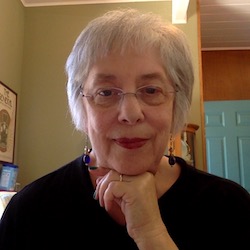A Remembrance by Linda Diamond, former President of CORE Learning
Almost 28 years ago while I was a senior policy analyst, sitting in my office at RPP International, a California education public policy think tank, I heard a commanding voice berating my boss, Paul Berman, for failing to address the most important policy issue of the time. The woman was Marion Joseph, a California grandmother who saw a serious problem—California’s children were not learning to read. Marion saw this firsthand when she discovered that her beloved grandson struggled to learn to read. He was not alone. California’s reading scores were in the tank, so Marion made it her mission to learn from researchers how reading should be taught. She soon understood that whole language was not the way, and she was determined to do something about it. At that moment, 28 years ago, CORE was born.
Paul Berman, knowing he was out of his depth, asked Marion to meet with me, a former director of Curriculum and Staff Development in the Alameda Unified School District, since I was the only one in the office with actual school experience. Many years before, I had been trained by Siegfried Engelmann in Direct Instruction, so I knew about reading. We spoke for hours, and soon thereafter she returned with Bill Honig, former state schools superintendent, and later Drs. Anne Cunningham and Ruth Nathan, both reading researchers.
Marion’s idea was to launch an organization that would take the known body of reading research, then decades old, into the practice field. Paul Berman agreed to fund us as we developed professional development, and meanwhile Marion met with state policy leaders and continued lobbying anyone in government who would listen. In 1997, former governor Pete Wilson, a Republican, appointed Marion, a lifelong Democrat, to the state board of education. Delaine Eastin, at the time California’s state superintendent of public instruction, convened with Marion’s help a task force to look at reading instruction, and Marion made sure I was on the task force. Marion also made sure that reading researchers she had met with addressed the task force. Consequently, California embarked on a major overhaul of reading instruction.
With Marion spurring CORE on, we set about designing what started as five days of training for elementary school educators. Marion corralled several prominent researchers to help us launch, including Drs. Joe Torgesen, Ed Kame‘enui, Doug Carnine, and Louisa Moats. With Anne Cunningham and Ruth Nathan, protegés of Dr. Keith Stanovich, we created the first professional development series covering phonemic awareness, phonics, fluency, vocabulary, and comprehension. I wrote, with Anne and Ruth, much of our first trainings, receiving constant feedback from the experts, and then convinced, with Bill Honig’s help, a few districts to let us try it out. In the early days San Ramon Unified School District, Stockton Unified School District, and Livermore Joint Unified School District were our guinea pigs. By then Sheila Mandel, a clinician from Marin County, had joined our team, and Dr. John Shefelbine, author of SIPPS (Systematic Instruction in Phonological Awareness, Phonics, and Sight Words), joined our training in Livermore.
The response was astonishing. Teachers had not heard of phonemic awareness, and their knowledge of explicit phonics instruction was negligible, but they were eager. Shortly after developing our first training, we hired Dr. Orna Lenchner, who authored the Sounds Abound program and had studied phoneme awareness. Orna developed assessments for us that later went into CORE’s collection of tests, Assessing Reading: Multiple Measures. Joe Torgesen wrote an article for us that was bound into a compendium of research articles, and the CORE Literacy Library began. A few years later, we completed the first edition of the Teaching Reading Sourcebook. During all this time, Marion was a constant presence, calling me frequently to make sure I was staying the course. She urged others to focus on reading, encouraging David Packard Jr. to support the Reading Lions Project, ably led by Alice Furry out of the Sacramento County Office of Education. Though small in stature, Marion’s reach was mighty, long and unwavering, steadfast to the end.
On March 17, 2022, I visited Marion in the assisted-living home she was in, knowing she was not going to be with us much longer, and on March 24, surrounded by her beloved family and after days of calls and visits from the many “Reading Lions” she had nurtured, Marion passed away. No one can replace Marion, but her legacy lives on. When I visited her, Marion said there was more to be done, and I promised her, although I had retired from CORE, that I would keep on working for improved reading instruction. I also assured her that many younger reading warriors were carrying on the work so that all children could learn to read.
A Remembrance by Dale Webster, Vice President of Literacy, CORE, Inc.
I first met Marion Joseph 26 years ago when I was working as a Jesse Unruh Fellow in the California State Assembly. This was shortly after Marion and Linda Diamond had participated in the California Task Force on Reading and the task force’s report, Every Child a Reader, was published. During the time on the task force Marion was also schlepping stacks of research articles all over the legislature, lobbying staff and legislators to learn about the research on teaching reading that clearly pointed to the importance of systematic, explicit foundational skills instruction as part of a comprehensive approach to teaching reading. During my legislative fellowship, I was placed with Assemblymember Steve Baldwin, a conservative who was very interested in education issues, particularly reading. Steve was one of several legislators who heeded Marion’s call to action. Together, Marion and Steve formulated a plan to convene an informational hearing in the spring of 1996 to learn where California was in its move toward a balanced, comprehensive approach to teaching reading. As a staff member in Steve’s office, I was assigned to Marion to organize this hearing. Unbeknownst to me, at that moment, I became one of Marion’s “minions” as some of us liked to joke. And that is when my “education” began on what was then referred to as “scientifically based reading research.”
As a recent new teacher, I was aware of my own shortcomings and lack of knowledge about teaching reading and thus began a quest to learn as much as I could . . . a story for another time. Over the three months I worked with Marion putting together this hearing, I learned a lot about the politics of education and what Marion had done in her former career as chief of staff at the California Department of Education and her previous campaign experiences. As part of my experience, I met several reading researchers and was devouring the research that Marion had given me along with many other research articles. As we worked to organize this hearing and after successfully executing it, Marion and I developed a lifelong friendship. After my fellowship in the legislature was over, I went back to San Diego to renew my passion for teaching and to apply and grow my newfound knowledge and experience with teaching reading. Meeting Marion and helping her to organize that informational hearing on reading led me down a path that gave me new purpose in my young life and led me to CORE and to the Reading Lions Center at the Sacramento County Office of Education. I became one of many “soldiers” in a vast army of educators that started small and grew mightily across California and the nation to meet the goal of “every child a reader.” Across the years, I would call and talk to Marion and let her know what was happening in San Diego with reading and would visit Marion at her home. She would cook dinner or we would go out and “talk shop,” lament about politics, or laugh at silly things that we shared in common. Marion was a mentor and a friend. Because of meeting her, my purpose became clear.
A quote by Jeanne Chall, renowned reading researcher and Harvard professor, from her 1990 book, The Reading Crisis, still applies today, 32 years later, and is fitting for what Marion also believed:
“It is common today, as in the past, to look elsewhere than to educational research for an understanding of the literacy problems of low-income children and for ways of solving these problems. Currently, cultural and political theories are offered as reasons for the low achievement of poor children and for the lag between mainstream and at-risk children. Although cultural and political explanations may help us understand the broader picture, in the end they must be translated, in practical terms, into what can be done in schools and in homes. Such translations ought to consider the historical findings of educational research—that good teaching improves achievement and thereby can empower all children and especially those at risk.”
For more information explaining the California Reading Initiative and how Marion spearheaded this effort, please watch this short video.
In loving memory of an uncommon hero and champion for all children . . . good-bye for now.








